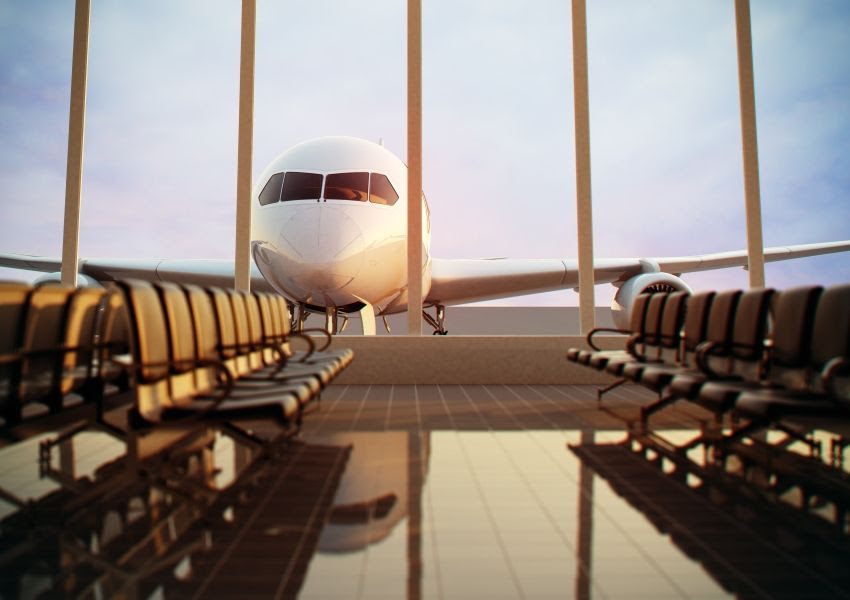How are airport codes determined?
Quick, you’re taking a flight from EWR to NRT—where are you, and where are you going? Unless you regularly book flights, you might not be familiar with the exact code for each airport. But anyone who works in the travel industry or is a frequent flyer does. (For the record, that route above is a flight from Newark Liberty International Airport in New Jersey to Narita International Airport in Tokyo.) So, how do they decide which random letters to assign to airports?
What are airport codes?
 :
:
As the name implies, airport codes are a series of shorthand letters assigned to each airport in the world and are used to easily identify them. Rather than writing out John F. Kennedy International Airport, we can say JFK and everyone knows we’re talking about a major airport in New York.
It might surprise you that most airports have two codes. The three letter code is used by airlines to coordinate flight plans and is the one you see on your plane tickets. But there’s also a four letter code, and that one is used exclusively by air traffic control. The four-letter code includes a country identifier. For example, EWR would be KEWR with the K identifying that EWR is located in the United States.
When did airport codes begin?
 :
:
Initially, there were only a handful of airports in the world, so codes weren’t really necessary. But as flight became more common, more airports began to appear, and it soon became obvious that a system was needed to keep them straight. This happened during the 1930s when flight became more accessible — even though air transportation was still limited to the wealthy at this time.
Who assigns airport codes?
 :
:
Officially, there are two governing bodies that assign airport codes to all the airports in the world. The familiar three-letter code is created by the International Air Transportation Associated (IATA) located in Canada. This organization is a trade association that focuses on the airline industry and began unifying airport codes in the 1960s. In contrast, the International Civil Aviation Organization (ICAO) is a United Nations subgroup that creates the four-letter codes. The ICAO is more of a regulatory group that focuses on maintaining a unified set of aviation standards for seamless international travel.
How are codes assigned?
 :
:
For the most part, airport codes are named either after their location (like BOS for Boston Logan International Airport) or after the airport name (like CDG for Charles De Gaulle International Airport in Paris). But there are some instances in the U.S. where this isn’t the case.
Airport codes that contain an “x”
 :
:
In the early days of air travel, when codes weren’t unified, airports would simply use the same two-letter codes given to their cities by the National Weather Service. When the codes switched to a three-letter system, these specific airports added an “x” to their name. So, airports like LAX and PHX are older locations that used to have two-letter codes.
Some airports have had a name change
 :
:
Perfect examples for this scenario are Orlando’s MCO and Chicago O’Hare’s ORD codes. Neither one is remotely close to the name of the city or the airport. In both cases, these airports were once military installations. For Orlando, MCO stands for the now-defunct McCoy Air Force Base. For O’Hare, it was the former site of Orchard Field and then later renamed after a World War II pilot, Edward Henry “Butch” O’Hare.
A code was already taken
 :
:
Have you ever wondered why CIN isn’t Cincinnati’s airport code but rather a small municipal airport in Carroll, Iowa? Well, the municipal airport beat Cincinnati to the punch. So, Cincinnati’s airport code is CVG. But if we’re being honest, this airport is located across the river in Covington, Kentucky. In that case, the airport code is spot on! This scenario isn’t unique, as there are plenty of larger international airports with weird codes because a municipal airport claimed a code first.
Other head-scratching airport code explanations focus on which letters begin the code. Most of these rules center around U.S. airports, but a few apply to international audiences as well.
- No N’s for domestic airports: For the most part, the U.S. Navy has claimed airport codes that begin with N for their bases. This is why Newark, New Jersey, is EWR instead of NEW.
- No K or W airports: In the U.S. only radio stations can have call signs that begin with K or W. W designates all radio stations east of the Mississippi River while K represents all stations west of the river.
- No Q airports worldwide: Q is reserved exclusively for international telecommunications. So, no matter where you are in the world, you won’t find an airport code that begins with Q.
- Canada has the market cornered on Y. Have you ever noticed that all Canadian airports begin with Y? That’s by design.
- Z airport codes are rare and are for special situations only.
So, if we haven’t given you a headache yet, go forth and research the stories behind some of the funnier airport code names like LOL in Nevada, EEK in Alaska, BAD in Louisiana, and SUX in Iowa!

No comments:
Post a Comment